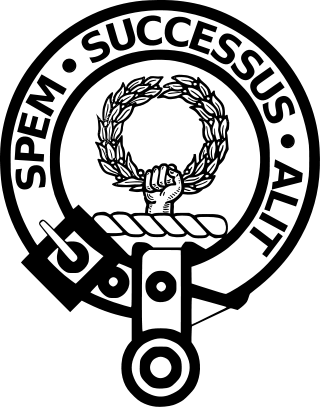
Clan Ross is a Highland Scottish clan. The original chiefs of the clan were the original Earls of Ross.
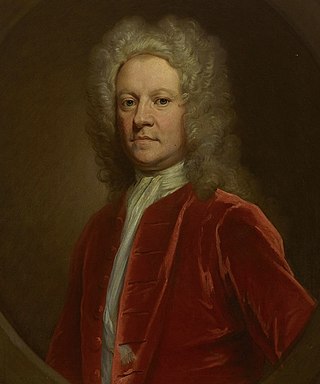
Simon Fraser, 11th Lord Lovat, nicknamed the Fox, was a Scottish Jacobite and Chief of Clan Fraser of Lovat, known for his feuding and changes of allegiance.

Lord Lovat is a title of the rank Lord of Parliament in the Peerage of Scotland. It was created in 1458 for Hugh Fraser by summoning him to the Scottish Parliament as Lord Fraser of Lovat, although the holder is referred to simply as Lord Lovat.
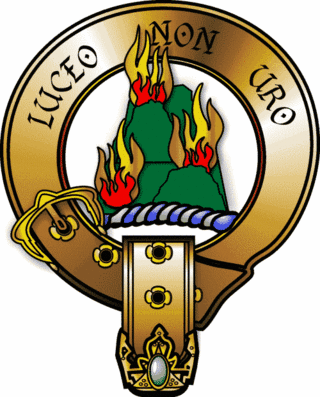
Clan Mackenzie is a Scottish clan, traditionally associated with Kintail and lands in Ross-shire in the Scottish Highlands. Traditional genealogies trace the ancestors of the Mackenzie chiefs to the 12th century. However, the earliest Mackenzie chief recorded by contemporary evidence is Alexander Mackenzie of Kintail who died some time after 1471. Traditionally, during the Wars of Scottish Independence, the Mackenzies supported Robert the Bruce, but feuded with the Earls of Ross in the latter part of the 14th century. During the 15th and 16th-centuries the Mackenzies feuded with the neighboring clans of Munro and MacDonald. In the 17th century the Mackenzie chief was made Earl of Seaforth in the peerage of Scotland. During the Scottish Civil War of the 17th century the Mackenzies largely supported the Royalists. During the Jacobite rising of 1715 the chief and clan of Mackenzie supported the Jacobite cause. However, during the Jacobite rising of 1745 the clan was divided with the chief, Kenneth Mackenzie, Lord Fortrose, supporting the British-Hanoverian Government and his relative, George Mackenzie, 3rd Earl of Cromartie, supporting the Jacobites.

Clan Mackay is an ancient and once-powerful Highland Scottish clan from the far North of the Scottish Highlands, but with roots in the old Kingdom of Moray.

Clan Fraser of Lovat is a Highland Scottish clan and the principal branch of Clan Fraser. The Frasers of Lovat are strongly associated with Inverness and the surrounding area since the Clan's founder gained lands there in the 13th century.
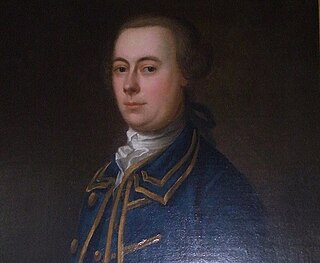
Sir Harry Munro, 7th Baronet was 25th Baron and the 28th chief of the Clan Munro. He was a Scottish soldier and politician. He was loyal to the Hanoverian dynasty and served as a captain in Loudon's Highlanders Regiment 1745–48.
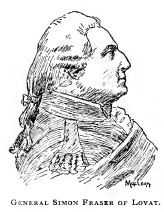
Simon Fraser of Lovat was a son of a notorious Jacobite clan chief, but he went on to serve with distinction in the British army. He also raised forces which served in the Seven Years' War against the French in Quebec, as well as the American Revolutionary War. Simon was the 19th Chief of the Clan Fraser of Lovat.
Sir George Munro of Culcairn was a Scottish soldier of the 18th century from Ross-shire, Scotland. He commanded the 3rd Independent Highland Company from 1714 to 1716, fought at the Battle of Glen Shiel in 1719, led the 6th Company in formation of the "Black Watch" in 1725, the 8th Company of Black Watch when it was regimented in 1739 and again commanded an Independent Highland Company in 1745–46. He was shot in error in 1746.

The Battle of Littleferry took place during the Jacobite rising in 1746, just before the Battle of Culloden. Scottish forces loyal to the British-Hanoverian Government defeated a Scottish Jacobite force.
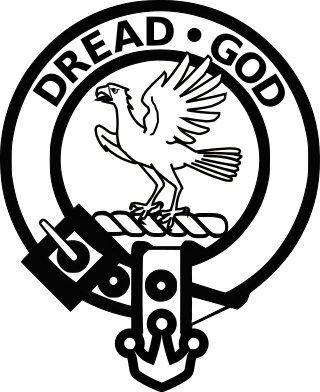
Clan Munro is a Highland Scottish clan. Historically the clan was based in Easter Ross in the Scottish Highlands. Traditional origins of the clan give its founder as Donald Munro who came from the north of Ireland and settled in Scotland in the eleventh century, though its true founder may have lived much later. It is also a strong tradition that the Munro chiefs supported Robert the Bruce during the Wars of Scottish Independence. The first proven clan chief on record however is Robert de Munro who died in 1369; his father is mentioned but not named in a number of charters. The clan chiefs originally held land principally at Findon on the Black Isle but exchanged it in 1350 for Estirfowlys. Robert's son Hugh who died in 1425 was the first of the family to be styled "of Foulis", despite which clan genealogies describe him as 9th baron.
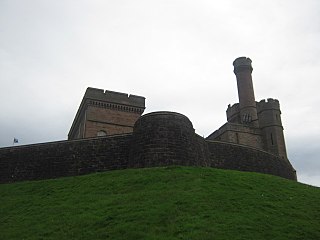
The siege of Inverness that took place in November 1715 was part of the Jacobite rising of 1715. The town of Inverness and Inverness Castle were being held by the Clan Mackenzie, led by Sir John Mackenzie of Coul who supported the rebel Jacobite cause. Simon Fraser, 11th Lord Lovat, chief of the Clan Fraser of Lovat besieged them, supported by men of the Clan Rose and Clan Forbes.

The siege of Brahan took place in Scotland in November 1715 and was part of the Jacobite rising of 1715. Highlanders loyal to the British-Hanoverian government of George I of Great Britain laid siege to Brahan Castle, seat of William Mackenzie, 5th Earl of Seaforth, who was a staunch Jacobite, loyal to the House of Stuart.
The Independent Highland Companies were irregular militia raised from the Scottish clans of the Scottish Highlands by order of the Scottish government between 1603 and 1760 in order to help keep the peace and enforce the law in the Highlands and were recognized as such by the government. The officers of the Independent Highland Companies were commissioned as officers of the British Army but the Independent Companies were not recognized as official regiments of the line of the army. The Independent Highland Companies were the progenitors of the Highland Regiments of the British Army that began when ten Independent Highland Companies were embodied to form the Earl of Crawford's Highland Regiment that was numbered the 43rd Regiment of Foot in 1739.
The Campbell of Argyll Militia also known as the Campbell militia, the Argyll militia, or the Argyllshire men, was an irregular militia unit formed in 1745 by John Campbell, 4th Duke of Argyll to oppose the Jacobite rising of 1745.
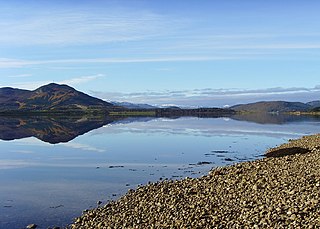
The Battle of Dornoch took place on 20 March 1746 and was part of the Jacobite rising of 1745 in Scotland. However, although recorded in history as a "battle" there was no actual fighting between the two sides. Instead a large rebel Jacobite force advanced on a position held by a force loyal to the British-Hanoverian Government who were taken by surprise and forced into a retreat. The Jacobite advance was coordinated by James Drummond, 3rd Duke of Perth at Dornoch, Sutherland.

The Raids on Lochaber and Shiramore took place in the Scottish Highlands between 22 May and 31 August 1746 and were part of the closing operations of the British-Hanoverian Government to bring to an end the Jacobite rising of 1745. Sometimes referred to as the "mopping up" operations, many rebels surrendered themselves and their arms, while others were captured and punished. It also included the hunt for the Jacobite leader Bonnie Prince Charles Edward Stuart otherwise known as the Young Pretender. Most of the work was done on behalf of the Government by the Independent Highland Companies of militia, the Campbell of Argyll Militia and also Loudon's Highlanders regiment.
George Mackay, 3rd Lord Reay (1678–1748), was a Scottish noble and chief of the Clan Mackay, a Scottish clan of the Scottish Highlands. During his life the Glorious Revolution took place which directly affected his family and estate, and during his chiefdom he served the British-Hanoverian Government during the Jacobite rising of 1715 and the Jacobite rising of 1745.

The siege of Culloden House took place on the night of 15/16 October 1745 and was part of the Jacobite rising of 1745. 200 men of the Jacobite Clan Fraser of Lovat attempted to capture Duncan Forbes, Lord Culloden who was the Lord President of the Court of Session, the most senior legal officer in Scotland.

Duncan Forbes 5th of Culloden was a Scottish lawyer and Whig politician who sat in the House of Commons from 1721 to 1737. As Lord President and senior Scottish legal officer, he played a major role in helping the government suppress the 1745 Jacobite Rising.

















